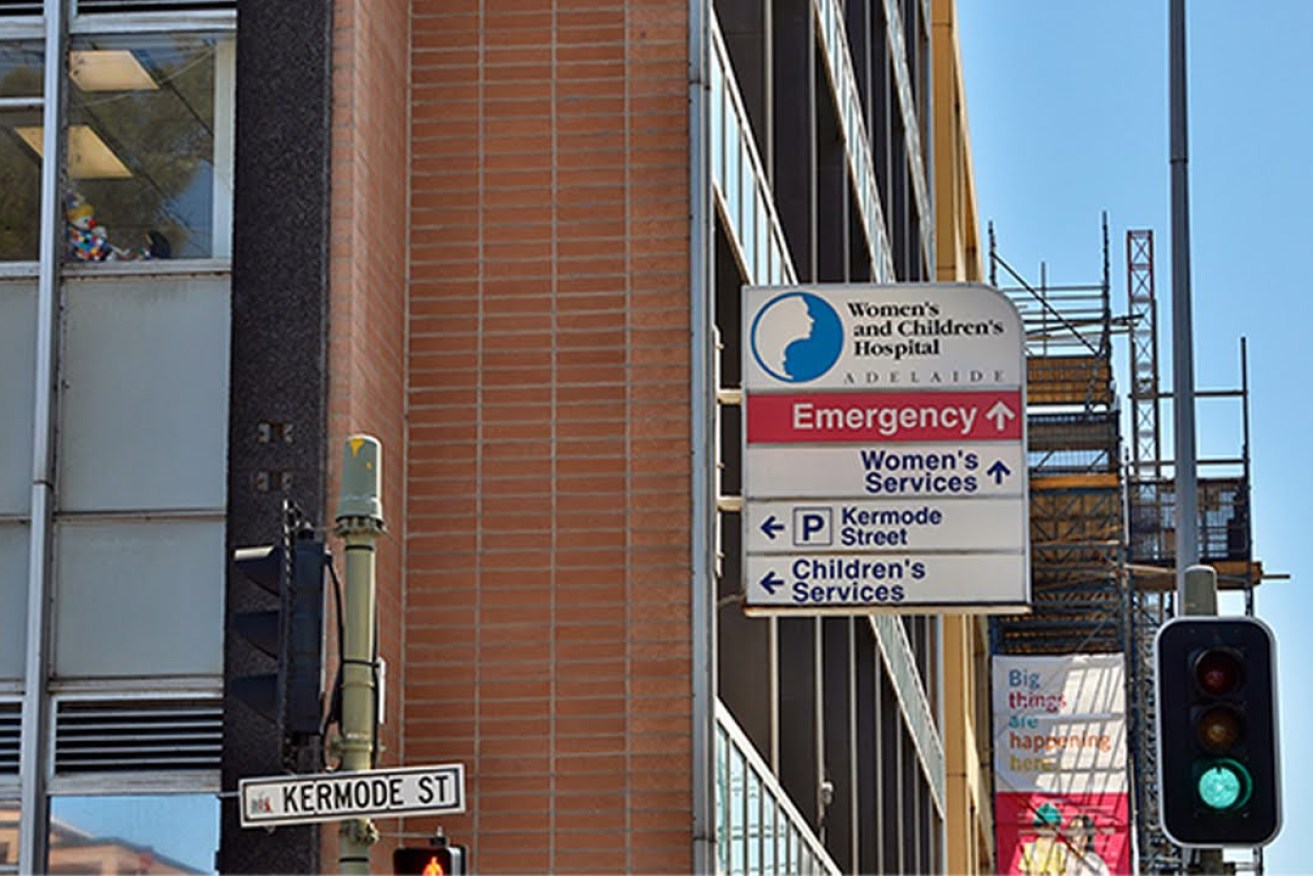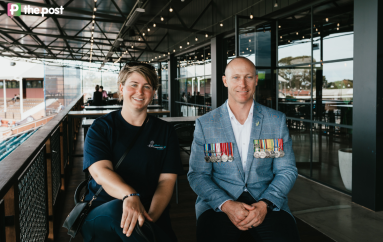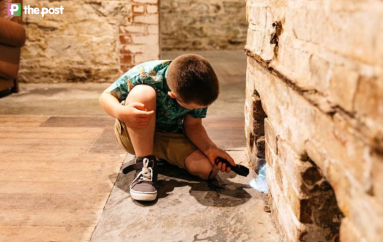Court rules WCH doctors can undertake work bans
The Employment Tribunal has ruled in favour of doctors being allowed to take industrial action at the Women’s and Children’s Hospital, saying the planned work bans would not pose a serious risk to patients – and might actually improve safety.


Photo: Tony Lewis/InDaily
The tribunal rejected a bid by the Women’s and Children’s Health Network to stop the doctors’ union from undertaking work bans in the paediatric emergency department.
It comes as allied health workers from nine SA public hospitals prepare to take stop work action tomorrow to protest against a lack of staff and resources.
In a decision delivered this week, SA Employment Tribunal deputy president Magistrate Stephen Lieschke refused to prohibit proposed industrial action at the WCH by the SA Salaried Medical Officers Association because he had not been convinced it would cause any major harm, saying it might in fact do the opposite.
The proposed industrial action would see some children moved more quickly into inpatient wards for treatment, rather than being treated in the ED, to free up beds there.
“Evidence does not establish a real prospect of any resulting serious adverse patient outcomes from the bans, but does show a likely reduction in the risk of severe adverse outcomes to patients waiting for unacceptably long periods for assessment and treatment, and a reduction in the fatigue and distress of medical staff,” Lieschke ruled.
The WCHN argued the industrial action was a breach of the salaried medical officers enterprise agreement but Lieschke rejected that.
“Industrial action has been taken because the doctors involved feel the current staffing levels are so inadequate that they are unsafe for patients presenting to the PED (paediatric emergency department), and in addition they create unsafe working conditions,” Lieschke found.
He said doctors had given evidence that they would not take any industrial action that would cause harm or risk to patients, “but they need to take steps to ensure a safe environment”.
“The industrial action is proposed due to inadequate responses from management,” he said.
In his findings, Lieschke referred to a letter from about 40 WCH paediatricians and trainee paediatricians sent last month to officials including the WCH Board, Premier Steven Marshall and Health Minister Stephen Wade, about their working conditions.
“The letter includes reference to the doctors ‘sinking’, being ‘overworked’, ‘fatigued’, ‘frustrated’ and ‘neglected’ working in an ‘overstretched’, ‘under resourced’ and ‘beleaguered’ emergency department,” Lieschke said.
“They expressed concern that it is only a matter of time before a preventable tragedy occurs through inadequate staffing.”
Clinicians giving evidence on behalf of the WCHN told Lieschke the work bans would cause flow disruptions elsewhere in the hospital and might result in some patients waiting longer for treatments.
“I generally accept their evidence of likely disturbances of patient flows, including flow blockages and some outpatient clinic delays from the industrial action,” Lieschke said.
“Significantly, none of the applicant’s witnesses spoke of increased risks of severe adverse patient outcomes, or a risk of fatalities, from the affected patients not being treated in the PED but being treated elsewhere in the hospital system.”
Lieschke said by contrast doctors giving evidence on behalf of the union expressed their “deep concern over the high risk of adverse outcomes including fatalities amongst patients who have to wait for exceptionally long periods to be assessed and treated in the PED”.
“They explained that the patients who would not be treated in the EECU (extended emergency care unit) under the bans were the least unwell of those presenting to the hospital, and they had already been seen, assessed and had their treatment commenced,” he said.
“In contrast those waiting unacceptable times to be seen could have all manner of severe illnesses that needed urgent attention.
“That group of patients is the focus of the doctors’ concerns.”
Lieschke said he accepted evidence provided about junior doctors’ “fatigue and feeling burnt out”.
“Some were extremely distressed over their concerns at the danger patients have been put in,” he said.
One senior doctor told the tribunal that due to a lack of medical staff he was unable to grant annual leave requests for clinicians, while another told him it was “the most stressful place” she had ever worked.
“I accept… evidence of the PED doctors’ commitment to ensuring any affected patients will not experience adverse outcomes, and that exceptions to the bans will be made based on these principles,” Lieschke said.
“I accept… evidence that the EECU has previously been closed for short periods due to excessive work demands and the bans are analogous to that situation.”
Lieschke said the evidence did not support the WCHN’s submission that SASMOA’s members had “exaggerated their concerns over patient safety and their own health”.
“To the contrary their evidence demonstrates their genuine professional concern over the health and safety of patients who have to wait to be seen in their department, and the deep widespread distress and fatigue caused by the current working arrangements,” he said.
Lieschke accepted SASMOA’s evidence that the industrial action was “likely to reduce the risk of severe adverse outcomes for waiting patients, and to reduce the very concerning fatigue and work pressure on staff members”.
“After weighing these impacts against the likely adverse impacts on the hospital and its patients generally from the proposed industrial action, I conclude that the industrial action is unlikely to cause a real risk of severe adverse outcomes, and is unlikely to have an overall net negative impact on patient safety, patient outcomes and staff health,” he said.
“For these reasons I consider it would not be appropriate to prohibit the proposed industrial action.”
He directed SASMOA to put in writing the exceptions to the work bans, before starting any industrial action.
SASMOA chief industrial officer Bernadette Mulholland told InDaily “what the evidence clearly demonstrates is South Australia’s preeminent children’s emergency department is medically under-resourced, placing at risk both staff and patients”.
“We know that comparable data across the country demonstrates that the Women’s and Children’s emergency department is the most under-resourced in the country by a long way,” she said.
“The impact of this neglect by the government and bureaucracy on our frontline doctors is heartbreaking, with some doctors now questioning whether to continue in their chosen profession.”
In a statement, the WCHN said: “The Women’s and Children’s Hospital has systems and processes in place to ensure patients in the Paediatric Emergency Department are cared for safely and appropriately.”
Doctors are not the only health workers protesting about work conditions.
Allied health workers from nine SA public hospitals will take stop work industrial action tomorrow.
The workers include radiographers, cardiac physiologists, physiotherapists, occupational therapists, dieticians, social workers and mental health workers.
The Health Services Union says its members “hold grave concerns about the state of SA’s public health system”.
“Chronic underfunding has led to a lack of staff and resources to adequately support the allied health workers caring for South Australians in hospital,” the union says.
“The HSU attempted to address the concerns of these frontline workers during enterprise agreement bargaining but the Marshall Government chose to ignore them.”
The stop work meeting and march to Parliament House will include workers from the Royal Adelaide Hospital, Queen Elizabeth Hospital, Women’s and Children’s Hospital, Hampstead Rehabilitation Centre, Repat Health Precinct, Flinders Medical Centre, Noarlunga Hospital, Modbury Hospital and Lyell McEwin Hospital.
The union says to protect patient health, at least one union member from each department will remain on their worksite in case of public emergency.




